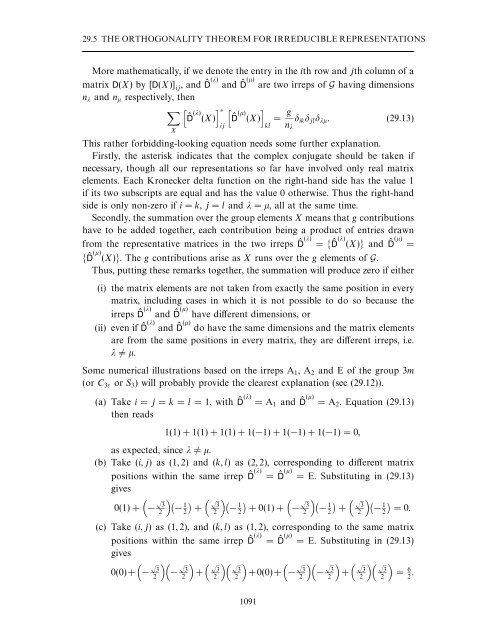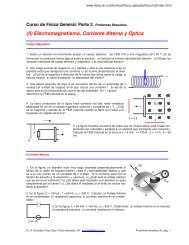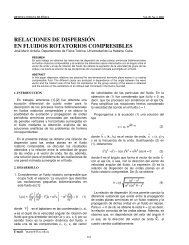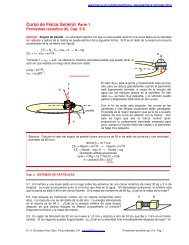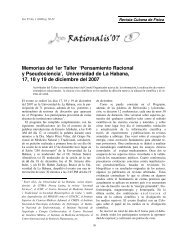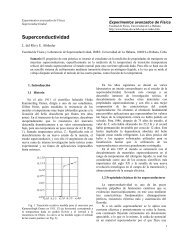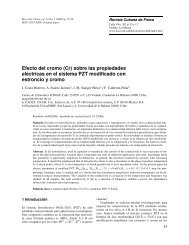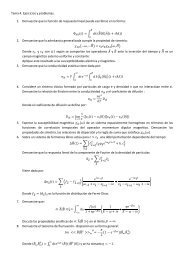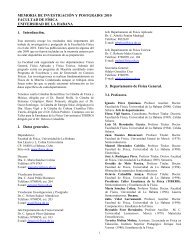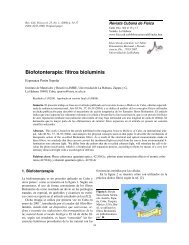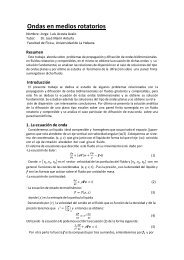Group theory
Group theory
Group theory
Create successful ePaper yourself
Turn your PDF publications into a flip-book with our unique Google optimized e-Paper software.
29.5 THE ORTHOGONALITY THEOREM FOR IRREDUCIBLE REPRESENTATIONSMore mathematically, if we denote the entry in the ith row and jth column of amatrix D(X) by [D(X)] ij , and ˆD (λ) and ˆD (µ) are two irreps of G having dimensionsn λ and n µ respectively, then ˆD (λ) ∗ (X) ˆD (X)(µ) = g δ ik δ jl δ λµ . (29.13)ijkl n λXThis rather forbidding-looking equation needs some further explanation.Firstly, the asterisk indicates that the complex conjugate should be taken ifnecessary, though all our representations so far have involved only real matrixelements. Each Kronecker delta function on the right-hand side has the value 1if its two subscripts are equal and has the value 0 otherwise. Thus the right-handside is only non-zero if i = k, j = l and λ = µ, all at the same time.Secondly, the summation over the group elements X means that g contributionshave to be added together, each contribution being a product of entries drawnfrom the representative matrices in the two irreps ˆD (λ) = { ˆD (λ) (X)} and ˆD (µ) ={ ˆD (µ) (X)}. The g contributions arise as X runs over the g elements of G.Thus, putting these remarks together, the summation will produce zero if either(i) the matrix elements are not taken from exactly the same position in everymatrix, including cases in which it is not possible to do so because theirreps ˆD (λ) and ˆD (µ) have different dimensions, or(ii) even if ˆD (λ) and ˆD (µ) do have the same dimensions and the matrix elementsare from the same positions in every matrix, they are different irreps, i.e.λ = µ.Some numerical illustrations based on the irreps A 1 , A 2 and E of the group 3m(or C 3v or S 3 ) will probably provide the clearest explanation (see (29.12)).(a) Take i = j = k = l = 1, with ˆD (λ) = A 1 and ˆD (µ) = A 2 . Equation (29.13)then reads1(1) + 1(1) + 1(1) + 1(−1) + 1(−1) + 1(−1) = 0,as expected, since λ = µ.(b) Take (i, j) as (1, 2) and (k, l) as (2, 2), corresponding to different matrixpositions within the same irrep ˆD (λ) = ˆD (µ) = E. Substituting in (29.13)gives0(1) +− √ 32 −12+ √32 − 12 + 0(1) +− √ 32 −12+ √32 −12= 0.(c) Take (i, j) as (1, 2), and (k, l) as (1, 2), corresponding to the same matrixpositions within the same irrep ˆD (λ) = ˆD (µ) = E. Substituting in (29.13)gives0(0)+− √ 32− √ 32+ √32 √32 +0(0)+− √ 32− √ 32+ √32 √32= 6 2 .1091


